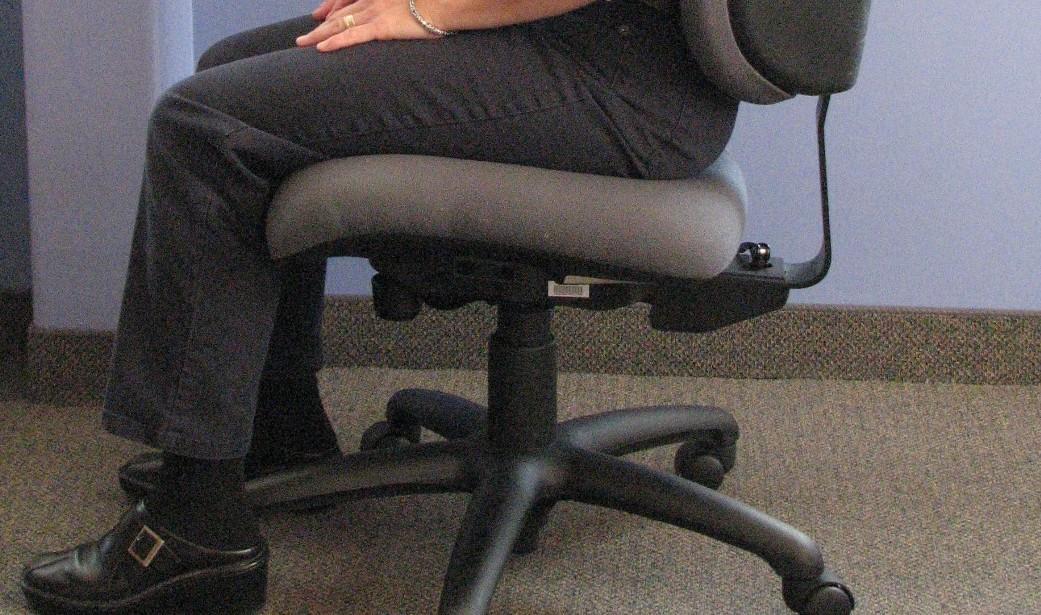Our team meets every second Friday to share ideas, finish “one-off” projects, and learn about new methods. Each person has his/her own favourite spot to sit. But in between team meetings, we often run open enrollment training. So other people come in and sit in “our” seats. They make adjustments (especially in our office ergo course!) and they sometimes even swap seats. So when our “goldilocks” ergonomists come in to sit down, they find that somebody has been sitting in their seats!
This problem is not unique to our team, of course. Many call centers and other offices have shared work stations, where people have to adjust their chairs if someone else uses their workstations (provided they know how!). And we are “lucky” in that all of our ergonomists know exactly how to adjust a chair.
One thing that we actively promote is training for office workers to adjust their own chairs. It’s not enough to get it adjusted once and then threaten anyone who touches it. People should be able to adjust their own chairs, within a minute or so. Like any new skill, this takes practice. So, when you are promoting office chair adjustment in your office, consider doing it in phases. Teach people how to adjust the height of their seat pan so that their keyboard and mouse are at elbow height and their feet are firmly supported on the floor or a footrest. After you’re sure that they ought to know how to do this, post the instructions someplace convenient. And then MESS with them! Go around and raise or lower the seats to the most extreme settings at the end of every day, and then make sure that people are actually fixing them at the beginning of the next shift. Once they’ve figured out seat pan height, move on to backrest/lumbar support height. You get the idea. We wouldn’t show someone how to drive a car once and then expect them to drive every day. People need practice with new skills! (Remember that adult learning cycle – presentation, application, feedback? I show you. You try it. I tell you if you got it right.)
One common barrier to adjustment is the “eject” button – you know the one! Every chair seems to have some adjustment lever that, once pulled, launches the user out of the seat. Often it’s the “seat pan tilt” feature. It requires a gymnast with the strength of Atlas to get the seat back into a flat position. Chair manufacturers don’t do this on purpose (we hope), but it certainly challenges ergonomists in our efforts to promote adjustment during the day. Our advice? Make sure all the paddles are labelled. If the chair has a “eject” button, try to make it clear (use a red label?) and make sure that you post instructions on how to correct the setting when (not “if”) someone touches it.
So go get started….learn about your chairs. Break the job of adjusting them down into simple steps. And then start teaching people how to use them.

21
Feb, 13

